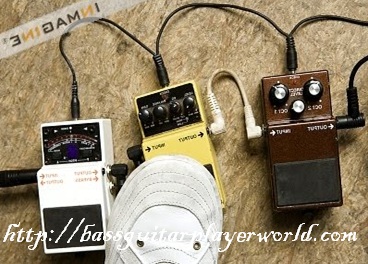Diatonic Scale Exercises And Theory in Note Relationships
 Learning scales takes some time. There is no right way to learn them, and there is no wrong way to learn them, so long as you learn the proper scales and, well, learn them.
Learning scales takes some time. There is no right way to learn them, and there is no wrong way to learn them, so long as you learn the proper scales and, well, learn them.
Playing exercises that involve the use of scales is a great way to help you to memorize the notes within a scale, and not just the scale’s shape.
In this article, we will go over some great, simple exercises that will help you to better learn your diatonic scales on the bass guitar.
First off, if you aren’t sure what diatonic scales are, that’s okay; most people don’t know the diatonic scales by the name diatonic in the first place, unless they have taken courses on musical theory.
What Does the Term Diatonic Mean From a Practical Perspective?
Diatonic scales are the major, minor, augmented, and diminished scales that you play every single day. C Major, A minor, Bb Major, E diminished minor; these are only a few examples of diatonic scales that are commonly used in music. In other words, every single seven note scale that is played from tonic to octave that you know is a diatonic scale. Neat, huh?
Now That You Know What They Are, Let’s Get on to the Exercises
One of the best ways to memorize your scales is by simply playing them. Learning the diatonic scales is easy if you are practicing them, saying the note names aloud or thinking them in your head as you play them.
 If you can play a scale ascending and descending and are able to name the notes of the scale while you play it, you are going to be able to play the scale from memory at any given time. It also means that you actually know the scale.
If you can play a scale ascending and descending and are able to name the notes of the scale while you play it, you are going to be able to play the scale from memory at any given time. It also means that you actually know the scale.
If you aren’t content with being able to play the diatonic scales backwards and forwards (and you shouldn’t be), the next best way to memorize them is by creating riffs and licks from them. Try writing some simple, linear melodies at first.
This exercise helps you to better familiarize yourself with a scale, and how the notes within it work as a group. Take the scale C Major for instance. Within C Major, there are a full seven other scales, known by the name of modes.
Develop Your Hearing Skills to Pick Out Relationships by Ear
While it isn’t necessary to learn them just yet, it is good to understand the relationship of the notes, and how they sound with one another in different orders so that, when the time comes, you are better able to understand the modes.
Once you are comfortable with the melodies that you have created from the diatonic scales, move on to using the diatonic scales to improvise. Start off with a scale that you are familiar with, and use it over a progression that you are likewise familiar with. Over time, try adding different techniques and different patterns to your bass improvisation, until you feel fully comfortable with the scale. Then move on to another.
In the end, you can’t do exercises without taking the time to practice, so be sure to set aside some time to do so. Good luck, and have fun with it!
Transform Yourself From An Average Player Into a Competent Bassist
JamPlay has thousands of video lessons that are conveniently arranged in structured lesson sets. With high quality instructions from world renowned bassists, Jamplay is an unparalleled learning resource. Whatever your genre preferences, you’ll find something here to help you improve your current level of playing.
Related Articles
Comments are closed.





